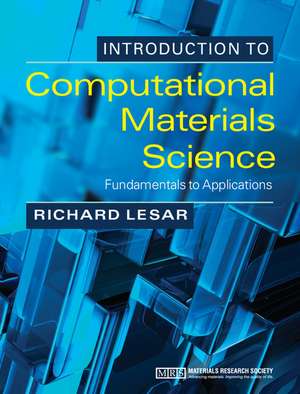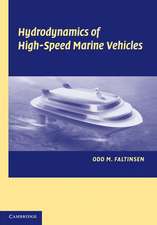Introduction to Computational Materials Science: Fundamentals to Applications
Autor Richard LeSaren Limba Engleză Hardback – 27 mar 2013
Preț: 658.96 lei
Preț vechi: 740.41 lei
-11% Nou
Puncte Express: 988
Preț estimativ în valută:
126.12€ • 131.18$ • 105.69£
126.12€ • 131.18$ • 105.69£
Carte tipărită la comandă
Livrare economică 13-27 martie
Preluare comenzi: 021 569.72.76
Specificații
ISBN-13: 9780521845878
ISBN-10: 0521845874
Pagini: 427
Ilustrații: 339 b/w illus. 15 tables
Dimensiuni: 196 x 252 x 22 mm
Greutate: 1.07 kg
Ediția:New.
Editura: Cambridge University Press
Colecția Cambridge University Press
Locul publicării:Cambridge, United Kingdom
ISBN-10: 0521845874
Pagini: 427
Ilustrații: 339 b/w illus. 15 tables
Dimensiuni: 196 x 252 x 22 mm
Greutate: 1.07 kg
Ediția:New.
Editura: Cambridge University Press
Colecția Cambridge University Press
Locul publicării:Cambridge, United Kingdom
Cuprins
Part I. Some Basics: 1. Materials modelling and simulation; 2. The random walk model; 3. Simulation of finite systems; Part II. Atoms and Molecules: 4. Electronic structure methods; 5. Interatomic potentials; 6. Molecular dynamics; 7. The Monte Carlo method; 8. Molecular and macromolecular systems; Part III. Mesoscopic Methods: 9. Kinetic Monte Carlo; 10. Monte Carlo methods at the mesoscale; 11. Cellular automata; 12. Phase-field methods; 13. Mesoscale dynamics; Part IV. Some Final Words: 14. Materials selection and design; Part V. Appendices: A. Energy units; B. Introduction to materials; C. Mathematical background; D. Classical mechanics; E. Electrostatics; F. Quantum mechanics; G. Statistical thermodynamics and kinetics; H. Linear elasticity; I. Introduction to computation.
Recenzii
“Finally, an introductory textbook on computational methods that addresses the breadth of materials science. Finally, an introductory textbook that emphasizes understanding the foundations of the subject. Kudos to Prof. Richard LeSar for producing such a beautifully pedagogical introductory text that covers the major methods of the field, relates them to their underlying science, and provides links to accessible simulation codes. "Introduction to Computational Materials Science" is the perfect companion to a first-course on this rapidly growing segment of our field.” - David J Srolovitz, University of Pennsylvania
“Prof. LeSar has written an elegant book on the methods that have been found to be useful for simulating materials. Unlike most texts, he has made the effort to give clear, straightforward explanations so that readers can implement the models for themselves. He has also covered a wider range of techniques and length-/time-scales than typical textbooks that ignore anything coarser than the atom. This text will be useful for a wide range of materials scientists and engineers.” - Anthony Rollett, Carnegie Mellon University
“Richard LeSar has successfully summarized the computational techniques that are most commonly used in Materials Science, with many examples that bring this field to life. I have been using drafts of this book in my Computational Materials course, with very positive student response. I am delighted to see the book in print—it will become a classic!” - Chris G. Van de Walle, University of California, Santa Barbara
“Prof. LeSar has written an elegant book on the methods that have been found to be useful for simulating materials. Unlike most texts, he has made the effort to give clear, straightforward explanations so that readers can implement the models for themselves. He has also covered a wider range of techniques and length-/time-scales than typical textbooks that ignore anything coarser than the atom. This text will be useful for a wide range of materials scientists and engineers.” - Anthony Rollett, Carnegie Mellon University
“Richard LeSar has successfully summarized the computational techniques that are most commonly used in Materials Science, with many examples that bring this field to life. I have been using drafts of this book in my Computational Materials course, with very positive student response. I am delighted to see the book in print—it will become a classic!” - Chris G. Van de Walle, University of California, Santa Barbara
Notă biografică
Descriere
Emphasising essential methods and universal principles, this textbook provides everything students need to understand the basics of simulating materials behaviour.







